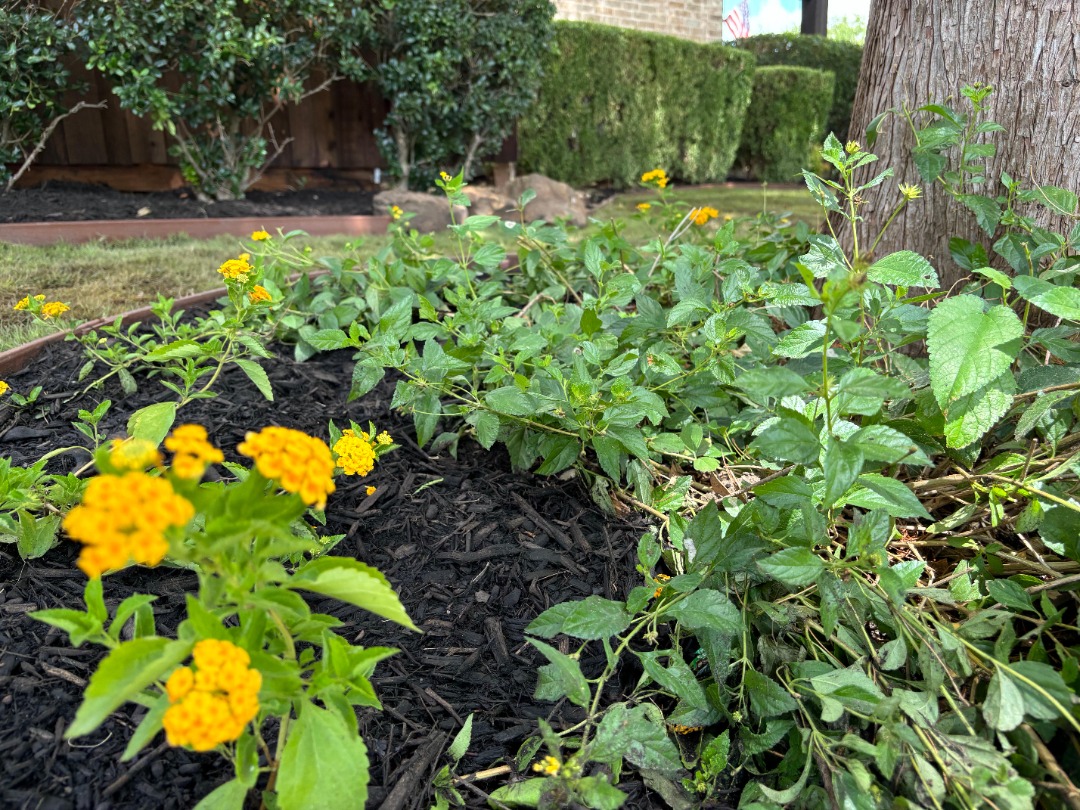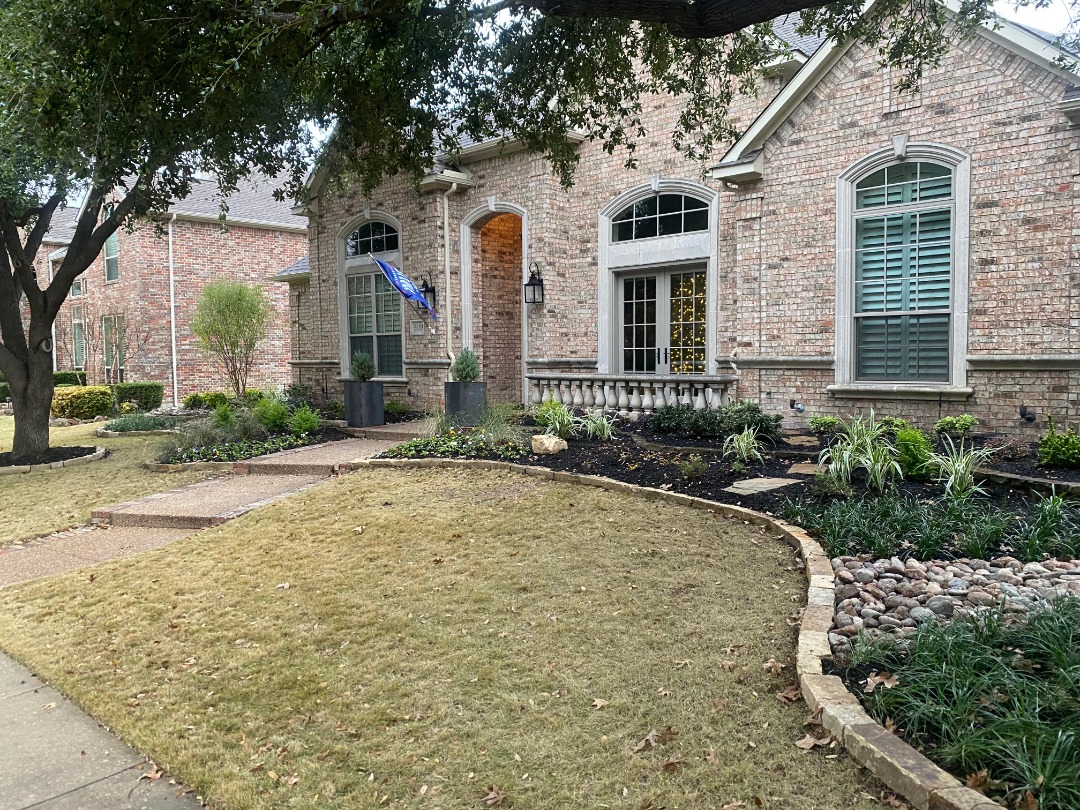The Negative Impact of Poor Drainage For Your Lawn & Yard
A healthy yard is about more than just a green lawn or well-trimmed hedges. If your drainage isn’t working properly, all your landscaping efforts could be wasted. When water isn’t moving through your yard the way it should, it can lead to issues that slowly eat away at your landscape’s health and structure. Whether you’re dealing with puddles after it rains or watching your soil slowly wash away, ignoring the signs can lead to much bigger problems down the road. Let’s walk through some of the most common signs your yard drainage might be failing and what you can do about it.
Your Yard Drainage is Not Draining Away Standing Water
Why are Puddles Forming in Your Yard?
When puddles form and linger after a rainfall, it’s a sign that your drainage system isn’t doing its job. Ideally, water should flow away from your yard, seeping into the ground or being redirected through a drainage system. If it doesn’t, there might be an underlying issue with how your yard is graded or how compacted the soil has become. Over time, yards can settle unevenly, especially in areas with clay-heavy soil, and that can cause dips where water naturally collects.
These low spots can turn into stubborn puddles that simply won’t go away on their own.
Sometimes it’s not even just a dip in the yard. If your landscape was installed without accounting for water flow, or if your gutters and downspouts aren’t properly guiding water away, then all that excess has nowhere else to go. Without correction, this water begins to sit and stagnate, turning even a healthy lawn into a soggy mess.
The Consequences of Allowing Standing Water to Remain
When standing water is left untreated, it becomes more than just a cosmetic problem. That water seeps down into the soil, suffocating grassroots and creating an ideal breeding ground for mosquitoes. Over time, it can start to rot the roots of your grass and plants, leading to yellowing, bald spots, and the spread of fungal diseases.
If the water collects near your foundation or any hardscaping, like patios or walkways, it can also cause damage by weakening the material and causing shifting or cracking. Beyond the structural risks, there’s a financial cost too. What starts as a minor drainage issue can spiral into the need for expensive lawn restoration, pest control, and even repairs to your home’s foundation. Recognizing the importance of early intervention isn’t just smart; it saves time, stress, and money.

Your Drainage is Not Absorbing Any Water
Does the Ground Always Feel Soggy?
A lawn that never seems to dry out is one of the clearest signs that your yard drainage is not working properly. You might notice the ground feels spongy or soft, even days after it has last rained. This isn’t normal and usually points to compacted soil or a yard that doesn’t have proper grading to allow runoff.
In some cases, it can even mean that your subsoil is so dense that water can’t move through it at all. This constant sogginess not only makes your lawn uncomfortable to walk on, but it can severely limit the kinds of plants and grass that will grow successfully. The roots become starved of oxygen, and your soil becomes more of a swamp than a source of nutrition. You might even notice an increase in moss or weeds, both of which thrive in damp, unhealthy conditions.
The Negative Side Effects of Soggy Ground
A soggy yard isn’t just unpleasant. It’s a major signal that your drainage issue could lead to deeper damage. Plants struggle to take root, which means your landscape investments won’t reach their full potential. Pests like fungus gnats and mold-loving insects find these environments perfect, and once they move in, they can be difficult to manage. Long-term exposure to this kind of moisture can also impact your trees. Even mature trees can begin to lean or fall as their root systems weaken from being waterlogged. What looks like a minor problem with squishy grass can evolve into a threat to your entire landscape’s stability.

Your Drainage is Not Stopping Soil Erosion
What is Soil Erosion?
which is where your lawn gets most of its nutrients. Without that layer, grass struggles to grow, roots lose their grip, and your landscape begins to degrade. Drainage systems that are poorly designed or completely missing can’t slow water down as it moves through your yard. Instead, it rushes across your lawn, pulling soil along with it.
You might notice this erosion happening on sloped areas or around downspouts where water exits forcefully. Another sign is exposed roots or a sudden dip where soil used to be. In landscaped beds, mulch might wash away during every rainfall, a clear indicator that the water isn’t being managed correctly.
What Happens if Your Soil Becomes Eroded?
Once your soil starts to erode, it’s a sign of a larger issue with drainage that can’t be ignored. The loss of that top layer means losing fertility, structure, and the ability for your plants to grow properly. It becomes difficult for your lawn to bounce back after each storm, and over time, the constant runoff starts to damage retaining walls, fences, and even nearby structures. Drainage issues that cause soil erosion also make it harder to control where water is going.
This increases the chance of standing water in areas that were previously dry, which continues the cycle. The deeper the problem gets, the more extensive the solution becomes. That’s why it is important to not delay fixing drainage issues that you start to take notice of. Better yet, try to be proactive and keep your eye out for anything that could become a potential drainage issue for your yard. You can do this by either getting a seasoned professional to access your yard, or learn to look for subtle clues.

Conclusion
Yard drainage problems aren’t just seasonal annoyances. They affect every aspect of your landscape’s health and can lead to long-term damage if left unchecked. Whether it’s the puddles forming after every rainfall, soggy ground that never dries, or soil erosion carving away at your lawn, each sign is telling you that something isn’t quite right. These aren’t issues to ignore or hope will go away on their own.
If you’ve noticed any of these signs in your own yard, it might be time to get help from professionals who know how to diagnose and correct the root cause. At Aeroscape, we specialize in drainage solutions that protect your lawn, save you time, and ensure your landscape thrives in the long run. Whether you’re dealing with drainage, soil erosion, or standing water, our team is ready to help you restore your yard’s health AND long-term health. Don’t let poor drainage drain the beauty of your curb appeal. Contact us today and take the first step toward a better backyard.

"*" indicates required fields
SERVICES
- Landscaping
- Patios
- Retaining Walls
- Mulch
- French Drains
- Artificial Turf
- Lawn Mowing
- Fire Pits
- Pavers
- Lawn Care
- Landscape Design
- Landscape Lighting
- Fertilizer
- Tree Services
- Commercial Landscaping
- Outdoor Living Spaces
- Sod Installation
- Tree Trimming
- Hardscaping
- Lawn Service
- Masonry
- Excavation
- Walkways
- Stump Grinding
- Tree Removal


